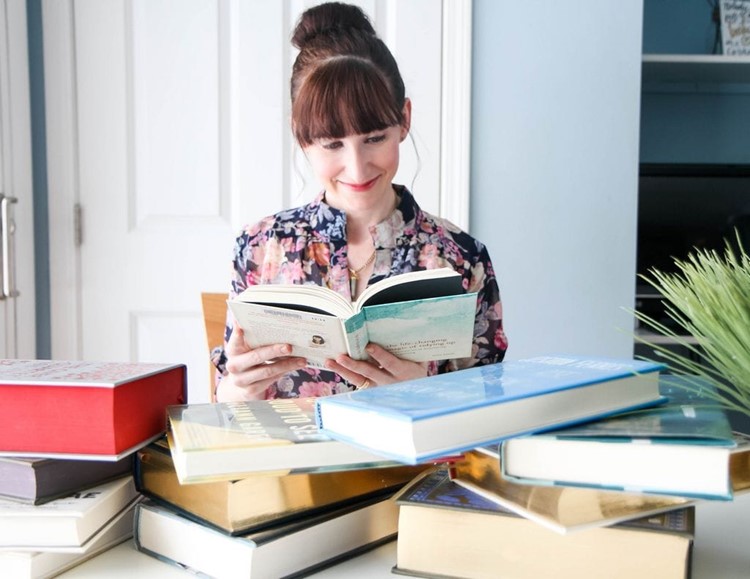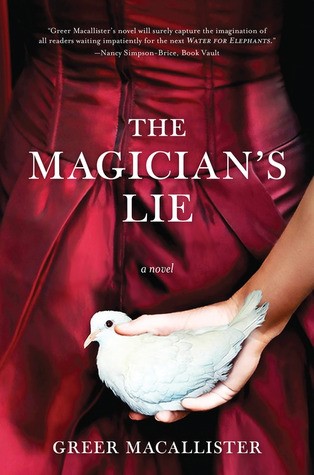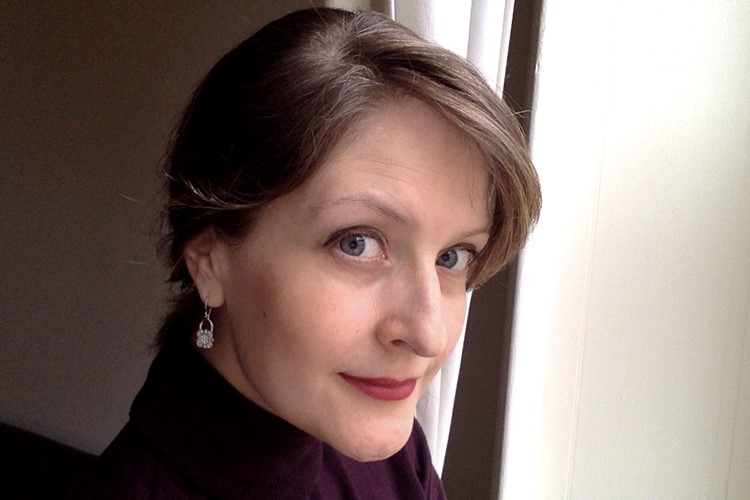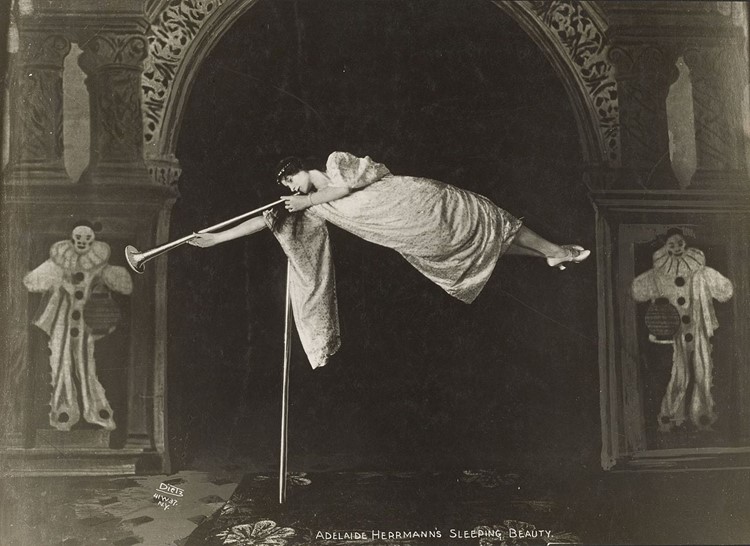
I love a good author interview and I am so excited to share an interview today with Greer Macallister about her book, The Magician’s Lie! I shared about this book in our June 2015 Must-Reads list and after finishing it, I emailed Greer to see if she would share a little bit more about the inspiration she had for tackling the topic of a female illusionist in this beautiful book.
It was such an unusual premise for a book and, if you know anything about me, you know that I am fascinated with both magic and the circus. They are my jam. That is why it is such a treat to talk with Greer today about the inspiration behind her book and about one of the most evil characters I have enjoyed reading. If you love a good evil villain, you have it in this one!

In The Magician’s Lie, Macallister writes a beautiful story of a female illusionist, something that was rare and provocative during the turn of the century, in this historical fiction debut. The story shows the reader things are not always as they seem even when it comes to the illusions we create in our own lives.
When a man is killed during her jaw-dropping act of sawing a man in half, The Amazing Arden is arrested and accused of the murder. The thing is, Arden has a story to tell about who that man really is and this murder just might be an illusion too. The story unfolds as she makes her confession to the officer who has arrested her as she confesses to the real crimes that have been committed in her life. There are some great plot twists in this one that kept me flipping the pages until the end and I thoroughly enjoyed this book.

How did you happen upon the story of Adelaide Herrmann and why did you decide to explore female magicians and illusionists in your debut novel?
It all started with an absence. Books, movies, TV commercials and other media often refer to the classic image of a magician cutting a woman in half. I began to wonder why it’s always the woman cut in half by a man, and never the other way around. Why don’t we see a female magician cutting her male assistant in half? So I decided I wanted to write that book, about that magician. Early in my research I came across Adelaide, who was undoubtedly the most famous female magician of her time. She didn’t fit the profile of someone who would cut a man in half, but she was too good to ignore. So I wove her in, and dozens if not hundreds of readers have told me she’s their favorite character.

You definitely illustrate some of Adelaide’s wildest tricks especially in the bullet catch trick that you have The Amazing Arden witness in one scene of your book. Were there any other illusions that you thought were really crazy that did not make the cut?
I tried to use the wildest things I could find! So much fun. There were a lot of parts of Adelaide’s act I didn’t use, though. She did a lot of dancing and pantomime. Which is a little less interesting to describe than, say, a woman turning into a tiger. So you understand my choice!
If you could master any magic trick (in your book or otherwise) what would it be?
I once saw Ricky Jay throw a playing card across the room, where it stuck in the rind of a watermelon. I don’t know how he does it. Mind-blowing.
Do you have any recommendations of other historical fiction books, nonfiction books, or documentaries that you found useful when doing your research or setting the mood for your story about the world of illusion for your readers that would like to dive more into this topic?
There is shockingly little writing on the history of women in stage magic, but then again, the ratio of women to men in magic in general is pretty darn small, so it follows. If you’re interested in Adelaide Herrmann, she did write a memoir, which was published a couple of years back. As far as setting the mood, you can do a lot worse than spend an evening watching The Prestige. One of my favorite movies. I often had the music playing in the background while I wrote.
You truly immerse yourself in your storytelling from the way people would have spoken back then, to the dishes they are eating, to the dress, and the feel of the city. I really felt like I was seeing much of your details firsthand. How much research did you need to do to really create these moments in your story and has this era always been a fascination for you?
Oh, the research ate me alive. I tell people I’m an accidental historical fiction writer. If it had made more sense to write about a contemporary female magician cutting men in half, I would’ve done it that way; it’s just that the story I wanted to tell fit so perfectly back in the 1890s to 1900s, when stage magic was something most people would have seen on a Vaudeville stage. So it had to be historical. But once I picked my era I really dove in, and I really wanted to have exactly that effect you’re describing – I want the reader to see and smell and taste the world. The New York Public Library has a great collection of old menus, so I literally had the image of an early 1900s menu from Keens Steakhouse in front of me, picking out what the characters could order from that.
Do you think titling your book this way helps the reader to expect that our narrator is going to be an unreliable one? Was this to create a necessary tension while reading that we were about to discover something?
Oh yes! That was very, very intentional. What is she lying about? (Assuming the magician narrating the story is the same magician referenced in the title…) And is there really only one lie? I definitely wanted the reader to be suspicious of Arden, and the title was a great way to raise some doubt from the get-go.
You really develop the character of Ray in a way that had me on the edge of my seat and rapidly flipping the pages. Was there a scene in particular that you really struggled writing for him because he was so vile or did you really get swept away into creating such an evil character?
One of the best things about being a fiction writer is the opportunity to get into the heads of the characters you’re writing. The flip side of that is that sometimes you have to go into heads you don’t like. That was Ray. The struggle with him was to make him more than a cardboard nemesis – he has his own reasons why he does the things that he does, and it all makes perfect sense to him, so some of that has to come across to the reader, even if we’re appalled by the results.
If you could tell anyone to read one book right now (other than your own) what would that book be? (see our list of ALL our recommendations HERE!)
My favorite book is almost always the book I’ve read most recently, since it’s fresh in my mind. In this case, that’s The Voyage of the Narwhal by Andrea Barrett. It’s about an Arctic expedition in the 1850s, during a time where men died regularly exploring that area. The story weaves together what happens on a particular ship with the lives of those waiting back at home for the ship to return. Barrett writes so beautifully and precisely about both the emotional and physical dimensions of her characters’ lives. It’s gorgeous and brutal. I loved it.
You can connect with Greer Macallister on GoodReads, on Facebook, or through her website! I’m always thankful for these moments with writers and I hope you will pick up this amazing book! You can always connect with me on GoodReads,through our books section of our site, and you can read our entire Sundays With Writers series for more author profiles. Happy reading, friends!
*This post contains affiliate links!
Pin It